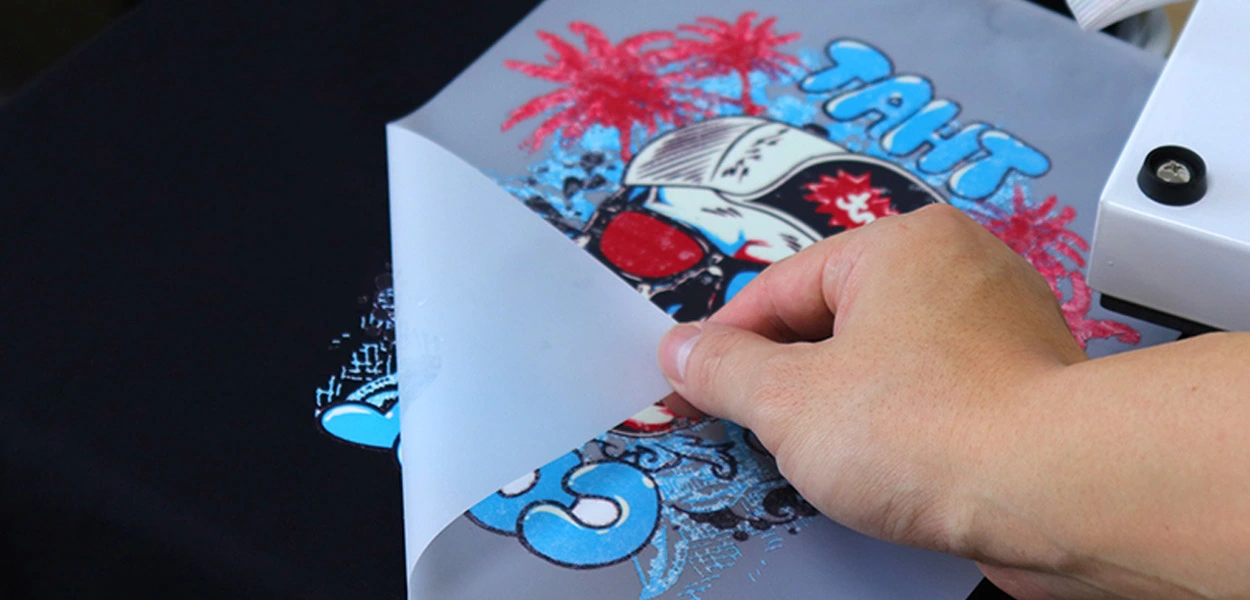The discussion of DTF (direct-to-film) printing versus DTG (direct-to-garment) printing begs the question, "What are the advantages of DTF technology?" While DTG printing produces high-quality, full-size prints with brilliant colors and a very soft feel, there are definitely some advantages to DTF printing that make it the perfect addition to your garment printing business. Direct-to-film printing involves printing a design onto a special film, applying and melting a powder adhesive onto the printed film, and then pressing the design onto the garment or merchandise. You will need the transfer film and hot melt powder, as well as the software to create the prints - no other special equipment is required! Below, we'll discuss seven advantages of this new technology.

Ⅰ. Suitable for a wide range of materials
While direct-to-garment printing works best on 100% cotton, DTF is suitable for many different garment materials: cotton, nylon, treated leather, polyester, 50/50 blends, as well as light and dark-colored fabrics. Transfers can even be applied to different types of surfaces such as luggage, shoes, and even glass, wood, and metal! You can expand your inventory by using DTF to apply your designs to a wide range of merchandise.
Ⅱ. No Pre-Processing Required
If you already own a DTG printer, you're probably familiar with the pre-treatment process (not to mention the drying time). The hot melt capacity applied to the DTF transfer bonds the print directly to the material, which means no pretreatment is required.
Ⅲ. Saving white ink
DTF requires less white ink - about 40% white, compared to 200% white for DTG printing. White ink tends to be the most expensive because it is used more and is pigmented with titanium oxide, so reducing the amount of white ink used for printing can save a lot of money.
Ⅳ. More durable than DTG printing
There's no denying that DTG prints have a soft, almost hand-free feel because the ink is applied directly to the garment. While DTF prints don't have the soft feel that DTG boasts, the transfer is more durable. Direct transfers wash well on film and are flexible - meaning they won't crack or peel, making them perfect for heavy-use items.

Ⅴ. Easy to apply
Printing onto film transfers means you can place designs on hard-to-reach or awkward surfaces. If the area can be heated, you can apply a DTF design to it! Because heat is only needed to adhere to the design, you can even sell printed transfers directly to your customers and allow them to place the design on any surface or item of their choice without special equipment!
Ⅵ. Faster Production Process
Since you can eliminate the steps of pre-treating and drying your garments, you can significantly reduce production time. This is great news for one-off or small orders that are traditionally unprofitable.
Ⅶ. Diversify your inventory
While it may not be feasible to print a bunch of the most popular designs in every size or color of the garment, with DTF printing, you can print popular designs ahead of time and use very little space for storage. You can then have your best-sellers ready to apply to any garment as needed!
While DTF printing is still not a complete replacement for DTG, there are many reasons why DTF can be a great addition to your business.
 Choose sublimation paper? Focus on quality over price
Choose sublimation paper? Focus on quality over price
 7 Factors To Consider Before Choosing A Digital Textile Printer
7 Factors To Consider Before Choosing A Digital Textile Printer
 2024 Apparel Decoration Industry Trends
2024 Apparel Decoration Industry Trends
 What are the features of digital textile printing equipment
What are the features of digital textile printing equipment